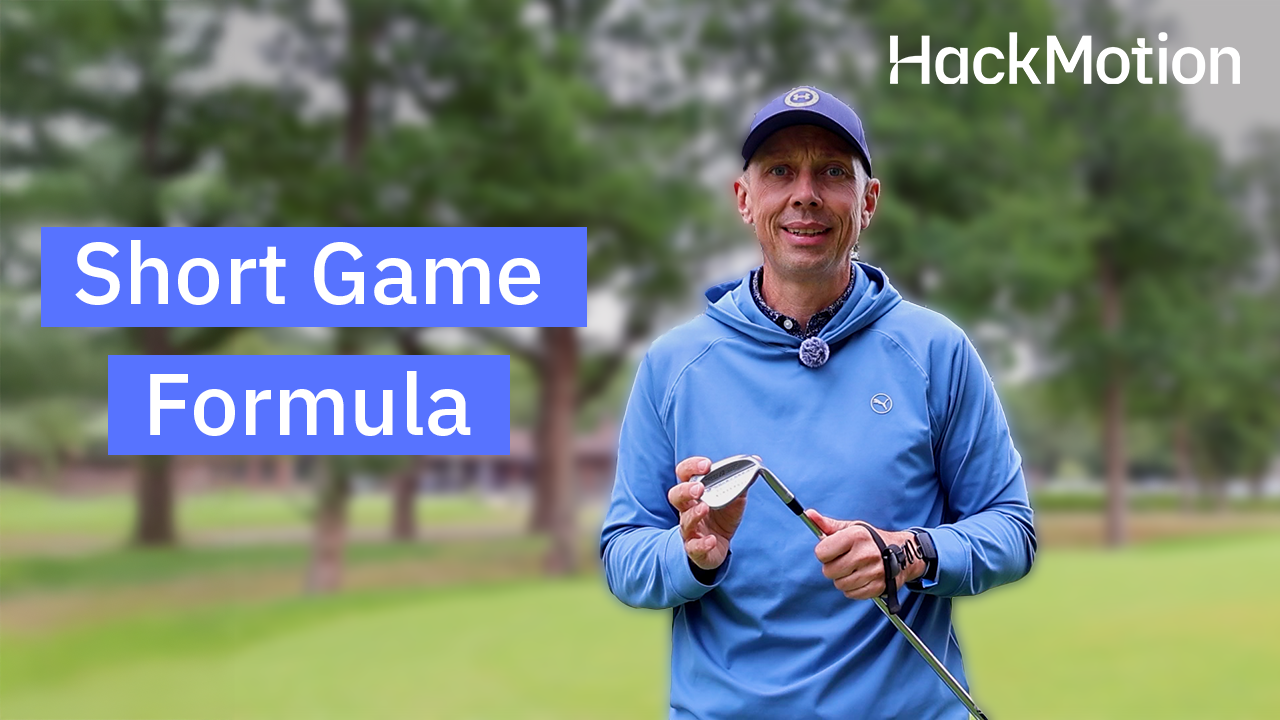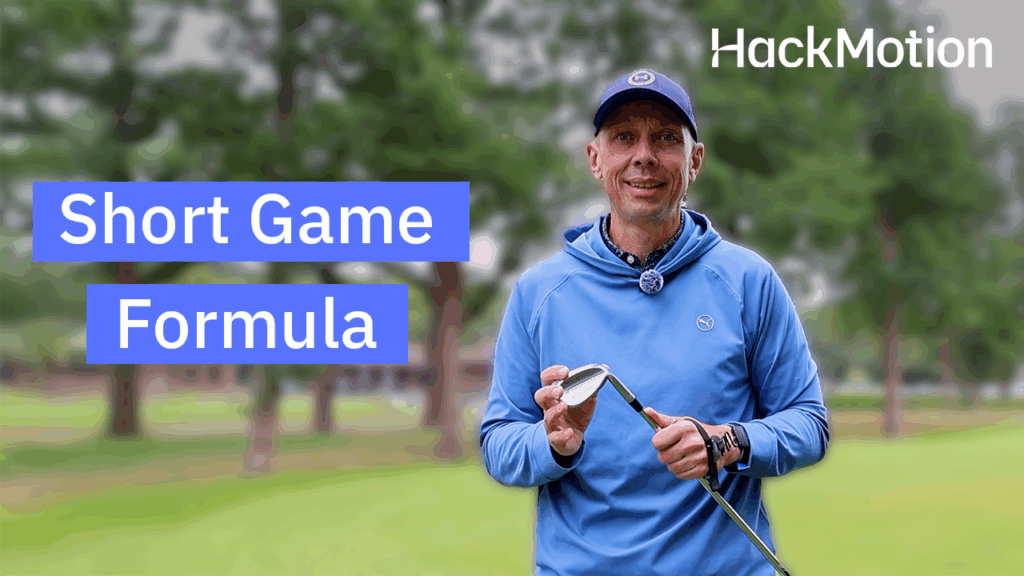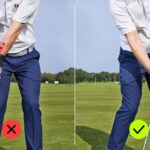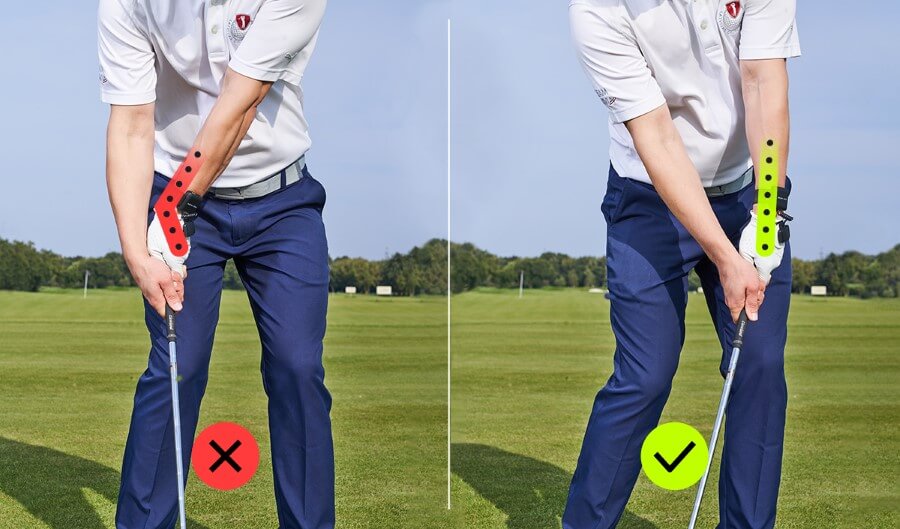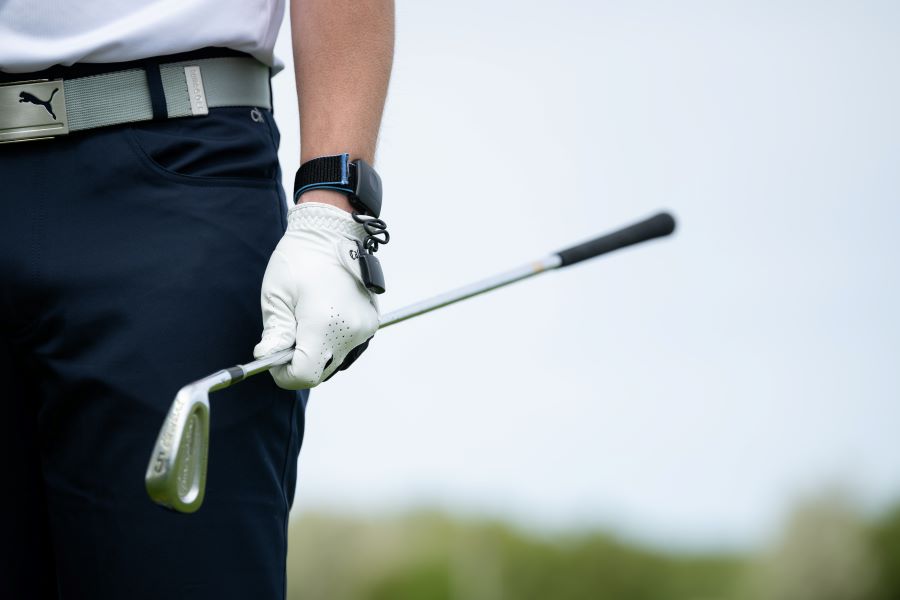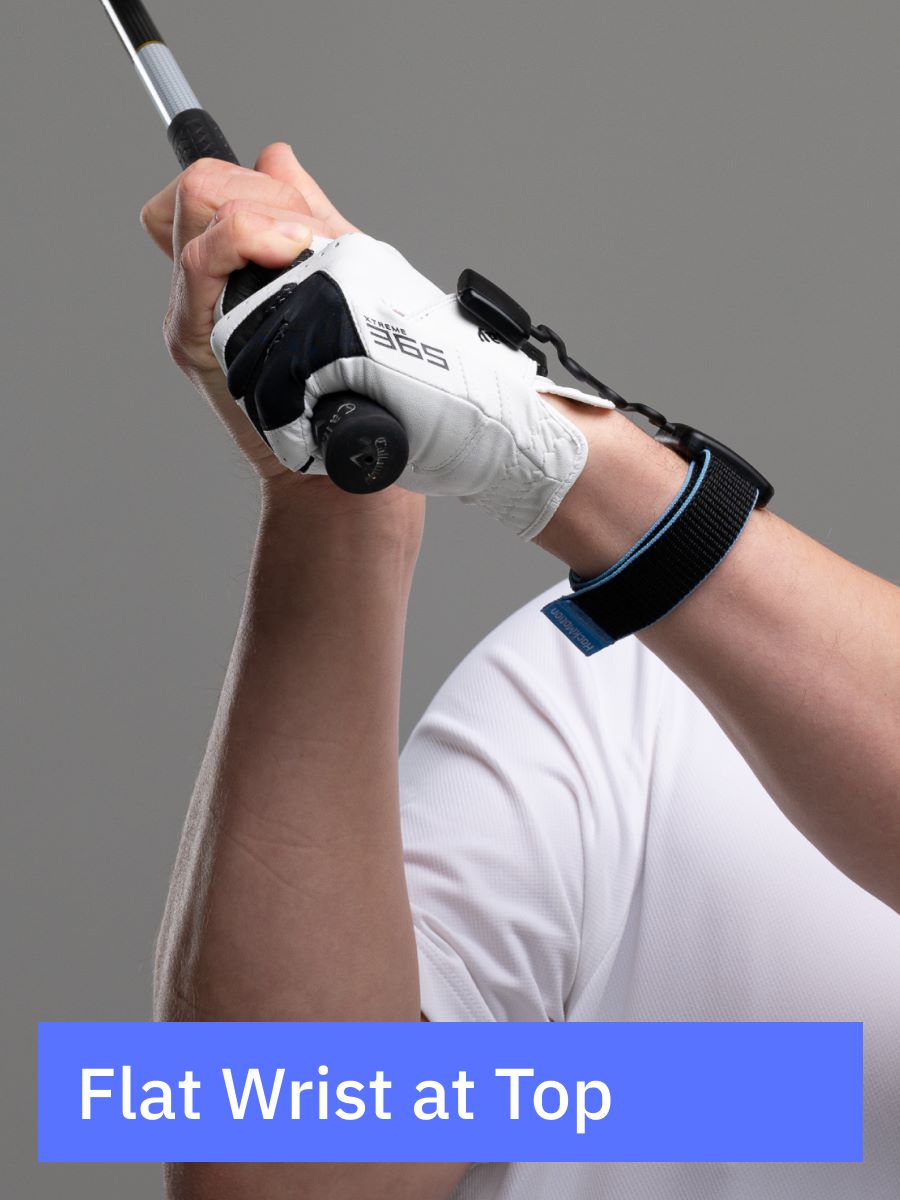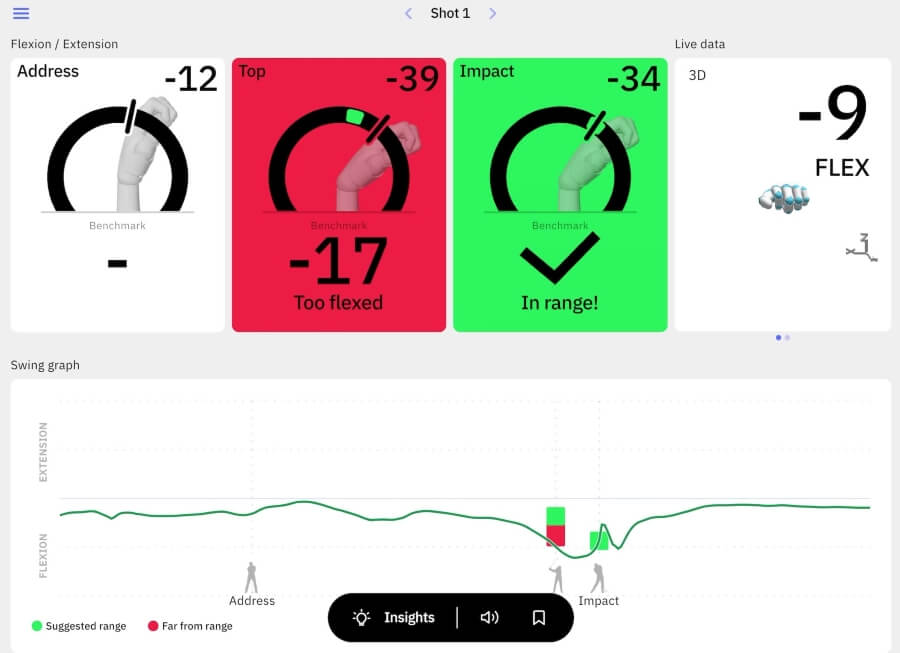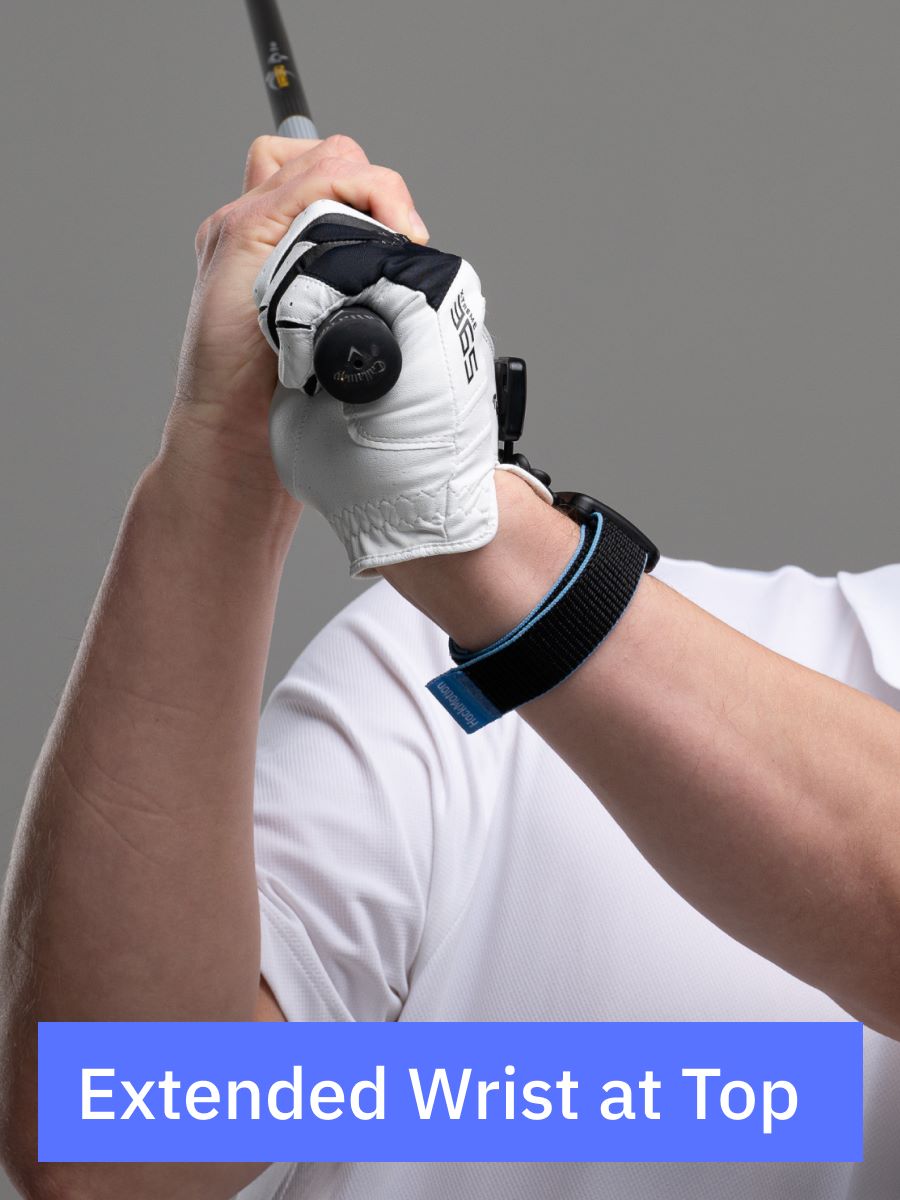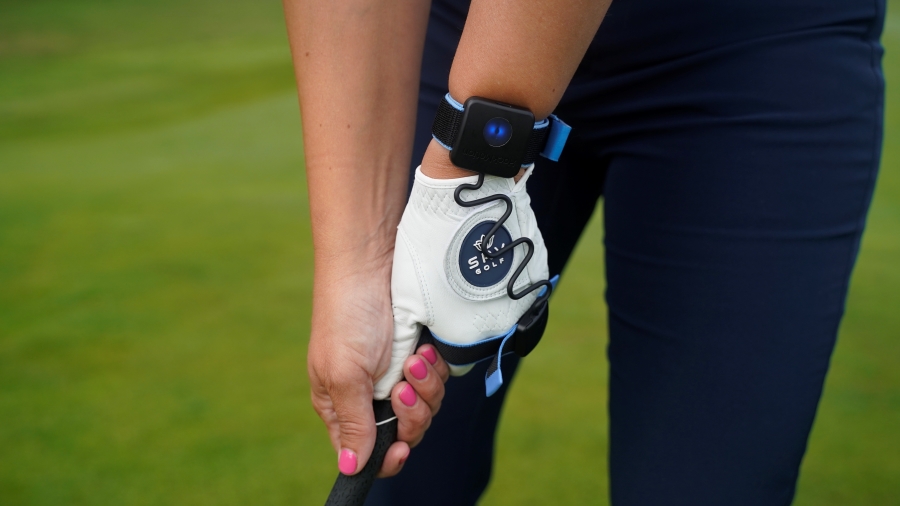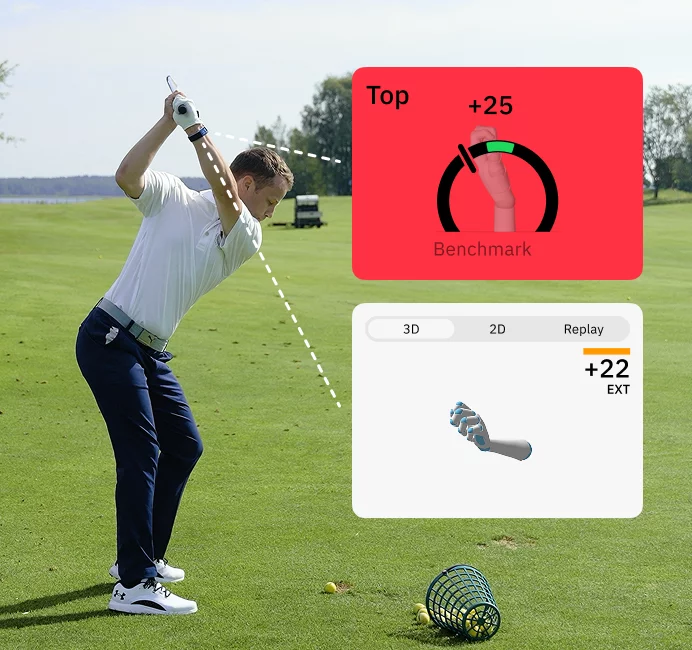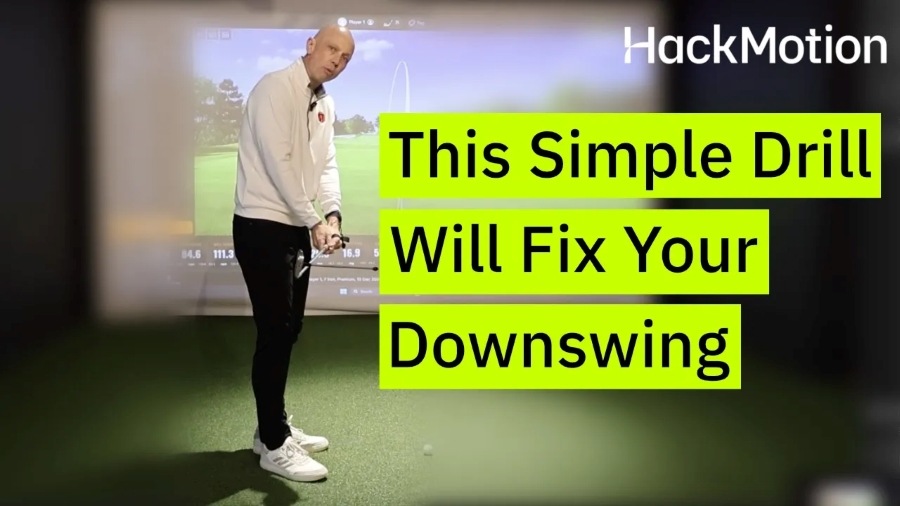Mastering Wrist Mechanics for Short Game Success: Chipping, Pitching, Bunker Play & Putting
If your long-game wrists feel dialed in but your scoring shots still let you down, this is where you need to focus. The short game requires subtle wrist adjustments that most amateurs overlook.
Wrist mechanics in chips, pitches, lobs, bunker shots, and putting determine how well you control trajectory, spin, and distance.
Mastering these differences is what separates a golfer who saves par from one who walks away frustrated.
Wrists in Short Game (Key Takeaways)
Here are the most important things to know about how the wrists move in the short game. If you want to get better at any of these areas, take a look at the drills and detailed wrist action movements below.
- Chipping: Keep the lead wrist flat to slightly flexed with almost no hinge for a predictable, bump-and-run style strike.
- Pitching: Add a bit of hinge and allow slight extension through impact to launch the ball higher with stopping power.
- Lobs & Bunkers: Maintain wrist extension with more hinge and an open face to float the ball high and soft.
- Putting: Eliminate hinge and keep wrist motion within ~2° for a repeatable, pendulum-like stroke.
- HackMotion: Use real-time feedback to match what you feel with what’s actually happening in your wrists.
Contents
Wrist Action in Chipping (Low, Running)
Chipping is about simplicity and predictability. The lead wrist should be flat to slightly flexed with almost no hinge. This keeps the strike clean and turns the motion into something closer to a putting stroke.
This is your go-to shot. You’ll want to perfect this before you move on to anything else. It’s the simplest wrist action as well, making it easy for you to make the connection to how the wrists work in the short game.
- Keep the shaft slightly more upright.
- Feel your thumbs pointing down (ulnar deviation).
- HackMotion data: the best chippers keep the hinge almost flat-line through the swing.
Want to learn more? Read our full guide on wrist action in chipping with detailed tips and drills.
Drill: Right-Hand-Only Chip
This drill isolates the trail wrist, teaching you to control the club with connection instead of a flip.
Right-Hand-Only Chipping Drill – Step by Step
- Take your normal setup. Grip the club with both hands, then remove your lead hand. Place it on your trail bicep to feel the body-arm connection.
- Swing the club back with your right arm only. Notice how the weight of the club wants to pull it inside. Use your wrist to keep the club moving “up” the plane instead of around you.
- Make ground contact first without a ball. Strike the turf consistently in the center of your stance.
- Progress to hitting balls. Start off a tee so you have a margin of error, then move to the turf.
- Use HackMotion to track trail-wrist deviation. Goal: reduce excessive ulnar and keep the club moving on plane.
Wrist Action in Pitching (Mid Flight, Stops Quickly)
Pitch shots need more height and spin, which means adding radial hinge and allowing the lead wrist to arrive slightly extended through impact.
The goal here is to make sure your club face is not closed at impact. If you close it you’ll lose that higher ball flight and the ability to stop the ball.
This is where you’ll feel like you are adding more wrist action to your motion:
- Add hinge gradually as your body turns.
- A little lead wrist extension keeps the face open for loft and spin.
- HackMotion confirms: hinge + extension separate pitches from chips.
Drill: Alignment Stick Release
The release pattern is what separates a low runner from a high spinner.
Alignment Stick Release Drill – Step by Step
- Grip an alignment stick alongside your club so it extends past your body.
- Make small pitch swings. If the stick hits your side, it means you’ve released — ideal for higher pitch shots.
- To train a lower chip-style strike, rehearse the same motion while keeping the stick from touching your side.
- Alternating between “no release” and “release” feels to build awareness of how the wrists change flight.
- Track with HackMotion: confirm more hinge + slight extension appear when you allow release.
Wrist Action in Lobs and Bunker Shots (High, Soft)
The lob is the extreme short game shot. To hit it high and soft, the lead wrist must stay extended with a full hinge and an open face. If you can get better at the lob shot from the grass, take that skill into the bunker with you.
It’s the same concept and feel to help hit bunker shots that you can control.
- Wider stance, ball forward, and open clubface.
- The lead wrist stays extended (“cupped”), keeping loft on the face.
- HackMotion shows skilled lob players maintain 20°+ of extension at impact — the opposite of a full swing.
Struggling from the sand? Check out our complete guide on wrist action in bunker shots for techniques and drills.
Drill: High Shot Extension Feel
This drill teaches you to maintain lead-wrist extension for loft.
High Shot Extension Feel Drill – Step by Step
- Set up with the ball forward, stance slightly wider, and the clubface open. Keep the shaft nearly vertical.
- Grip naturally without rolling the face open after setup.
- On the backswing, consciously extend the lead wrist. Use a tee or visual checkpoint to feel the face pointing skyward.
- Swing through while holding extension into impact and finish. The tee should still feel like it’s pointing up after the strike. Try this on the range first; it’s going to feel more extreme if you are used to shutting the face down at impact.
- Measure with HackMotion: the goal is around 20°+ of extension at impact for maximum loft.
Wrist Action in Putting (Quiet and Stable)
Putting is where the wrists must stay the quietest. However, as you wear your HackMotion wrist sensor, you’ll notice that the wrists do move in putting.
Golfers who are the best putters are those who control their wrist action. The stroke should feel like a pendulum, controlled by the arms and shoulders.
- No hinge or rotation.
- Wrists act as stabilizers, not power sources.
- HackMotion shows elite putters keep wrist deviation within ~2°.
Improve your stroke by reading our in-depth article on wrist action in putting with proven drills for consistency.
Drill: HackMotion Putting Stability
It’s almost impossible to know how much wrist action your putting stroke has unless you are measuring it.
The HackMotion putting stability drill helps you see how much movement you have in your wrists and how to quiet them.
HackMotion Putting Flexion / Extension Drill
Get a feel for the wrist movement that controls your putter’s loft.
HackMotion Putting Stability Drill – Step by Step
- Wear HackMotion while making 5–10 putts from short range.
- Watch your flexion/extension and deviation graphs.
- Keep both movements within ~2° start to finish.
- Repeat daily — the goal is to groove consistency, not a “perfect” number.
Practice by Handicap: How to Apply Short Game Wrist Action
Not every golfer needs to obsess over every degree of wrist angle. Here’s how to adapt practice based on where you are in the game.
High Handicap (90+):
Focus on chipping consistency. Keep the wrists quiet, eliminate flips, and practice the right-hand-only drill until you can strike the turf in the same spot every time.
Saving strokes comes from clean contact.
Don’t worry so much about more difficult, higher lofted shots. Get the basic chip down and then work from there.
Mid Handicap (80s):
Add pitch variety to your arsenal. Practice hinge and release drills to flight the ball higher and stop it faster. Combine this with HackMotion checkpoints to learn the difference between a chip and a pitch.
You need these higher lofted, more difficult shots to get yourself out of trouble and get up and down.
At this point, you should be able to feel exactly what it takes to manipulate the wrists to change the angle of the clubface.
Low Handicap (70s or better):
Refine lob and bunker play. Train with HackMotion to hold extension through impact and manage more hinge. Work on the high shot drill to open up new scoring options.
For putting, tighten your wrist stability to within 2° on every stroke; this is where consistency under pressure pays off.
Final Thoughts
Your long game might set up the round, but your short game finishes it. Each type of shot has its own “wrist setting,” and if you’ve never considered wrist action in the short game, now is the time.
Use HackMotion to practice drills that help you control trajectory, distance, and the clubface angle. Practice them in real time, and turn your short game into a scoring weapon.
